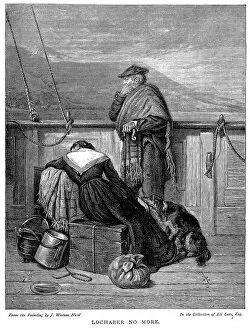Dispossessed Collection
"Dispossessed: A Reflection on Loss and Injustice" In the etching, aquatint, burnishing & burin artwork titled "No hay que dar voces (It's no use crying out), 1863
All Professionally Made to Order for Quick Shipping
"Dispossessed: A Reflection on Loss and Injustice" In the etching, aquatint, burnishing & burin artwork titled "No hay que dar voces (It's no use crying out), 1863, " we witness the silent despair of those whose voices have been silenced by circumstances beyond their control. The artist captures the profound sense of powerlessness that accompanies dispossession. The color lithograph "Cause and Effect. Or, The Irish Land Question" serves as a visual testament to the consequences of land disputes. It depicts the intricate web of cause and effect that perpetuates social inequalities, leaving many dispossessed from their ancestral lands. Amidst this turmoil, Gustave Doré's oil painting "Christus Consolator, 1851" offers solace in times of distress. With gentle compassion radiating from Christ's face, it reminds us that even in our moments of displacement and loss, there is hope for comfort and redemption. Voltaire's chromolithograph portrait reveals a man who fought against injustice with his words. As a French writer and philosopher known for challenging authority figures, he symbolizes resistance against being dispossessed not only physically but also intellectually. The narrative unfolds further with Facey Romford's story – dispossessed by the rightful heir – highlighting how inheritance can lead to displacement. This tale resonates throughout history; Vienna's Hall of Lost Causes stands as a haunting reminder of countless individuals stripped away from their rights in 1882. "No choice?" asks an oil painting created around 1850. Its brushstrokes capture the anguish felt when one is forced into situations where options seem nonexistent—a poignant reflection on lives forever altered by circumstances beyond control. "The Last of the Race, " painted in 1847 on canvas, portrays a solemn scene where remnants stand as reminders of what once was—a powerful representation echoing stories untold about cultures erased through colonization or displacement.












